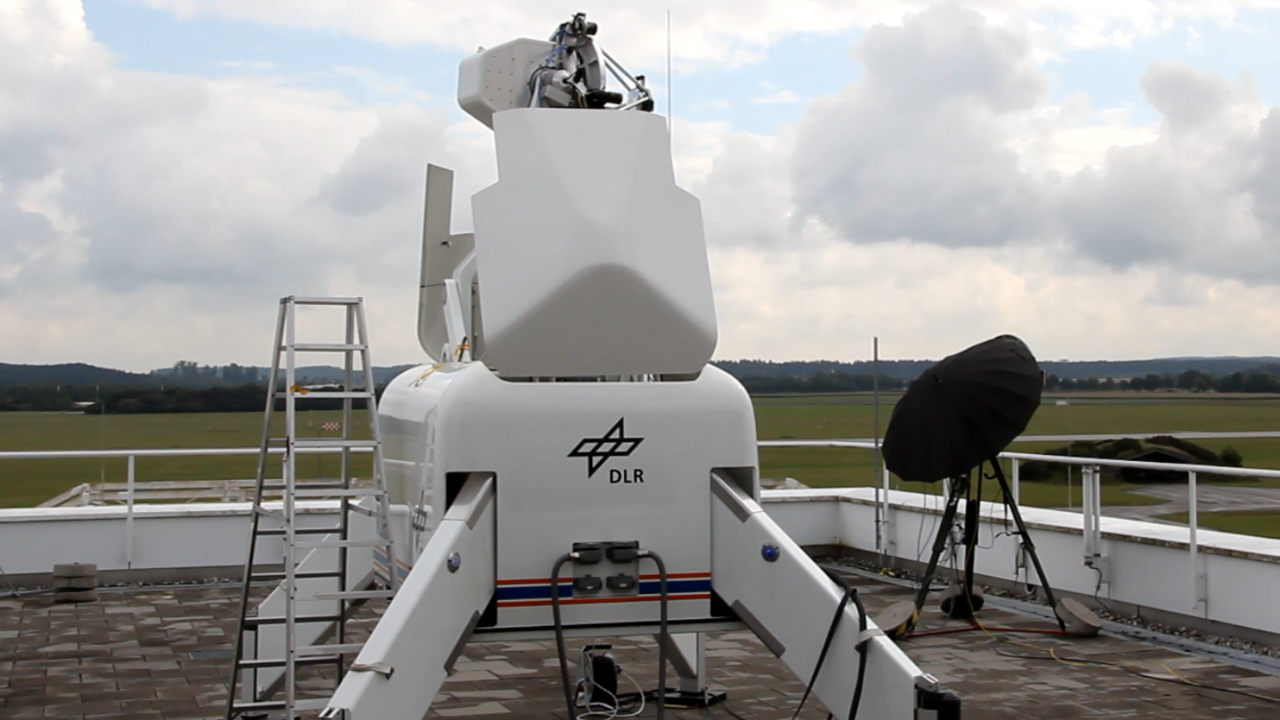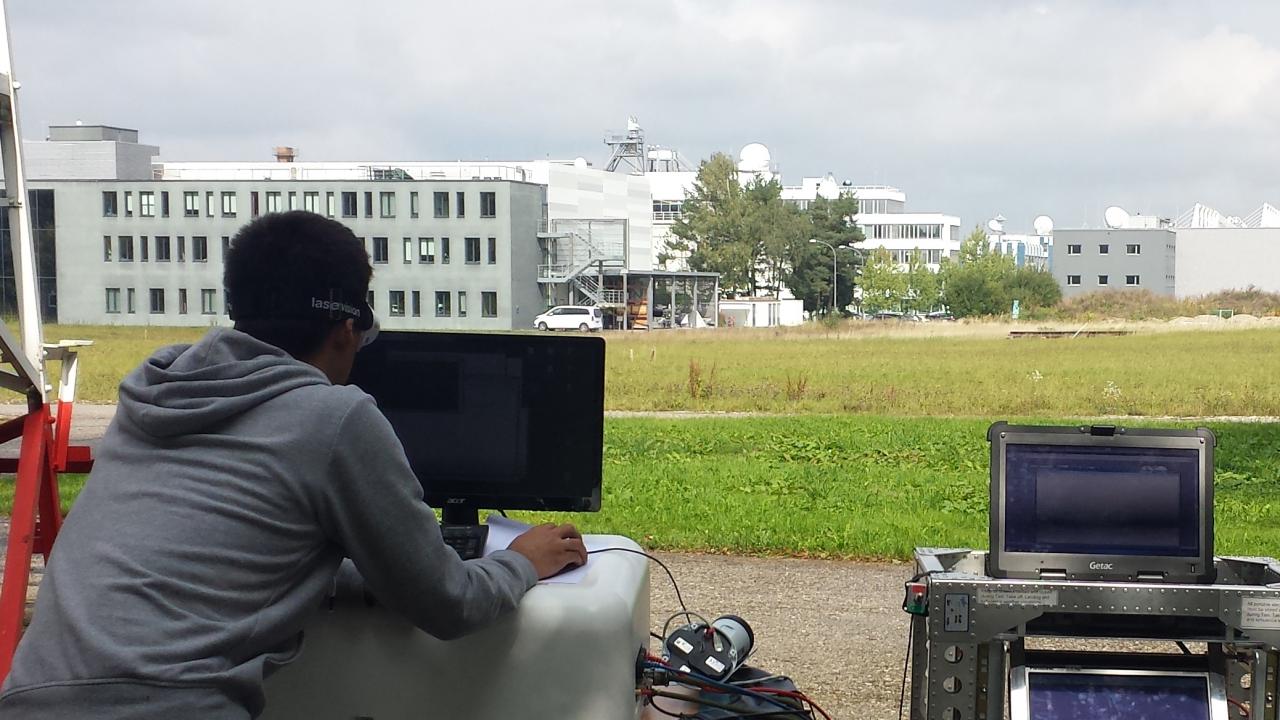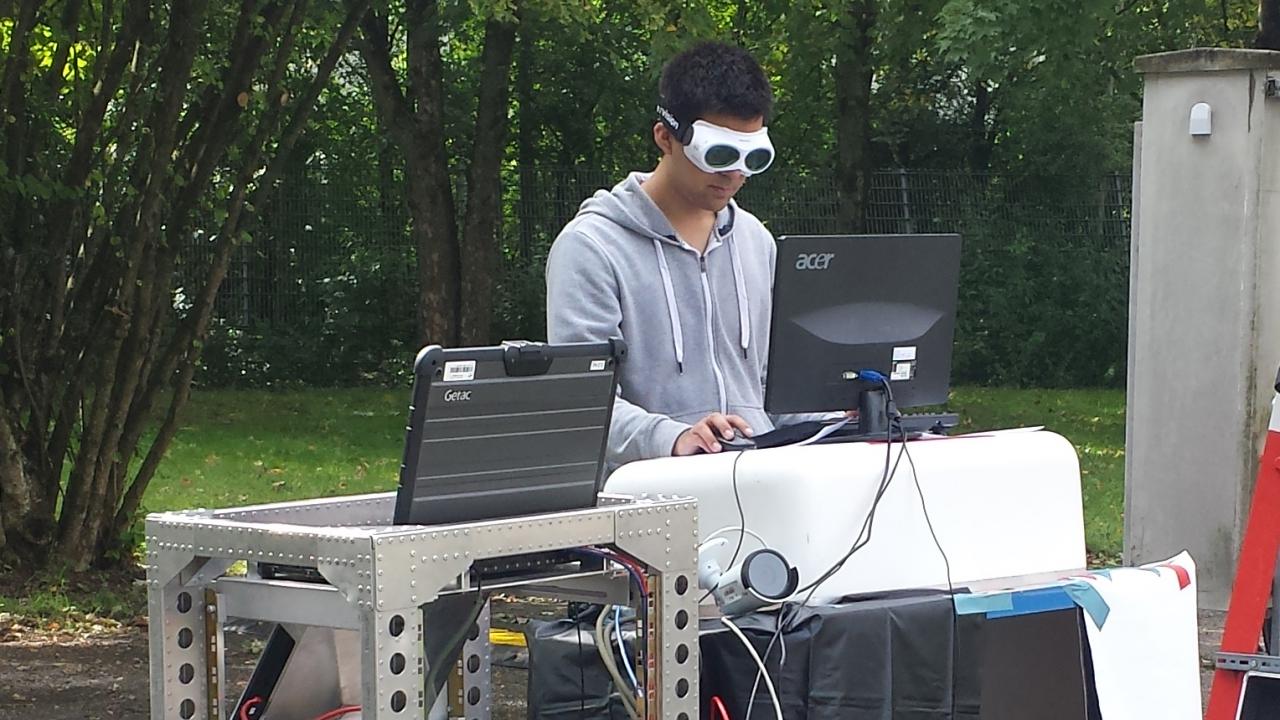In the VABENE++ project enormous amounts of data are generated during aerial photography flights. In order for the high-resolution images to reach the responsible emergency services on site as quickly and reliably as possible, they must be transferred from the aircraft to the ground quickly and reliably. An ideal application for the Free-Space Experimental Laser Terminal II (FELT-II) developed by the Institute for Communication and Navigation (IKN), which can transmit data via a laser beam with a data rate of approx. 1 Gbit/s to an optical ground station. After multiple missions in flight, the system has now been further improved and thoroughly checked during a detailed test at the DLR site in Oberpfaffenhofen.
When it comes to data transmission, not only speed but also reliability and thus protection against transmission failures are important. A direct line of sight is required for transmission via laser light, so atmospheric and weather influences such as fog, clouds or precipitation can affect the communication channel. For this reason, the IKN has developed a hybrid system for the FELT-II that can access a secondary radio link with a data rate of about 1 Mbit/s in the event of interference with the powerful primary laser link. It has a significantly lower transmission rate, but is less sensitive to atmospheric interference than the significantly faster laser link. To ensure that the coordination of these two transmission paths functions smoothly, software continuously measures the availability of the optical channel both on the ground and in the aircraft. If there is an interruption, the system automatically switches to the secondary radio link. The data can thus still be reliably transmitted to the ground despite the interruption of the laser link.
In September 2017, the hybrid system was first demonstrated in ground tests. For this purpose, a representative soil-to-ground scenario was established between FELT-II and the transportable optical ground station of the IKN. During the transmission all possible interruptions were simulated, as they can occur in flight.
The year before, the FELT-II had already been able to demonstrate its advantages for areas such as air monitoring and location information retrieval by means of high-rate data transmission during an overflight over the Oktoberfest. By demonstrating the hybrid link, the real-time transmission possible with the FELT-II was further improved and the uninterrupted operation and stability of the overall system was significantly increased.



